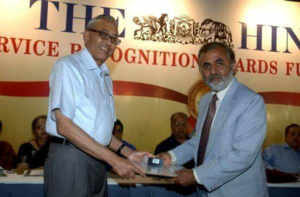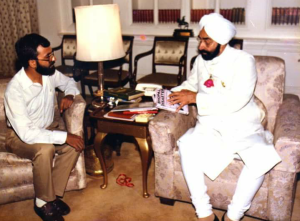Newsroom24x7 Desk
Lalit Shastri left a corporate job and spent more than a year studying the causes that led to the poisonous gas leak at the Union Carbide pesticide plant in Bhopal in December 1984.
Lalit’s findings, based on primary sources, were published in a book form in 1986. Lalit investigated the causes leading to the Bhopal gas disaster, moving from ground zero to the city hospitals from December 3, 1984 onward and travelling all the way to Institute in West Virginia, USA to compare and see first hand the difference in the level of safety provided in the Bhopal and the US plants. He also did exclusive research at the level of WHO and ILO in Geneva–a process that stretched for more than a year.
Lalit’s book “Bhopal Disaster-An eyewitness account” was launched by the then president Giani Zail Singh at Rashtrapati Bhawan in 1986. It has been listed in the U.S. Library of Congress catalogue and is a reference volume in libraries across several international Law Schools. Shortly after his book was released, Lalit became a full time journalist with The Hindu, India’s leading newspaper.
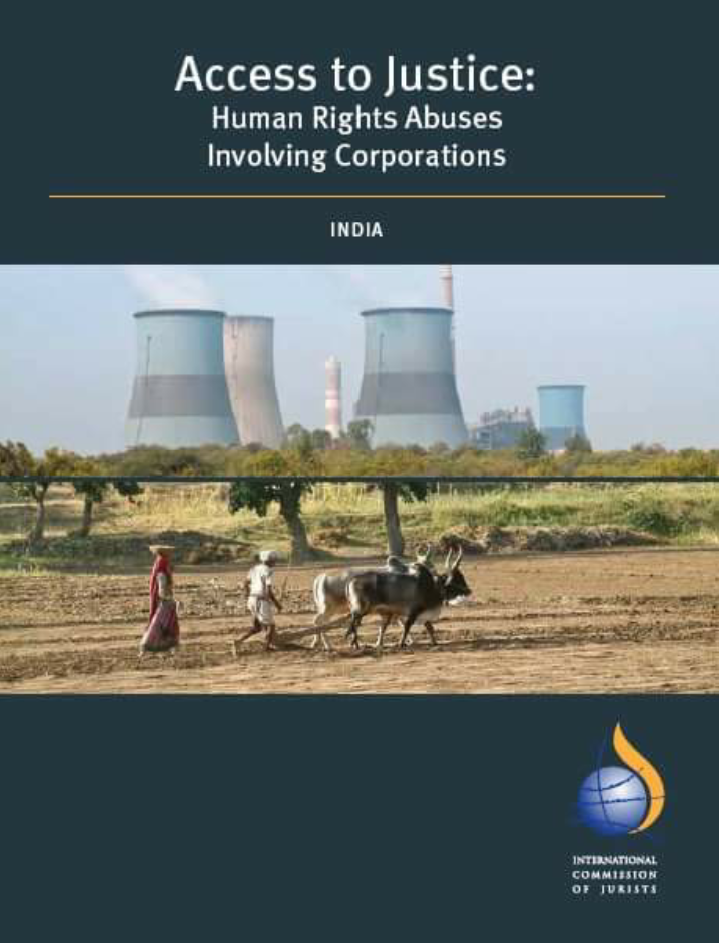
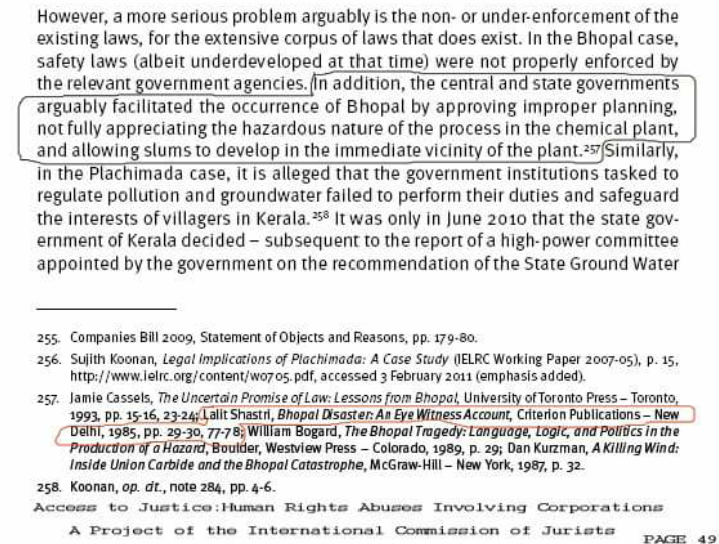
The International Commission of Jurists (ICJ) is a non-governmental organisation devoted to promoting the understanding and observance of the rule of law and the legal protection of human rights throughout the world. It is headquartered in Geneva, Switzerland, and has many national sections and affiliated organisations. It enjoys consultative status in the United Nations Economic and Social Council, UNESCO, the Council of Europe and the African Union. The ICJ maintains cooperative relations with various bodies of the Organization of American States.
The 1984 Bhopal gas disaster involving Union Carbide provoked a marked shift in perceptions concerning the conduct of corporations in India, leading to the enactment of stricter laws, emergence of new legal principles through the judiciary and development of enforcement mechanisms. This ICJ has underscored and brought in public domain a crucial pointer by Lalit in his book on Bhopal disaster.
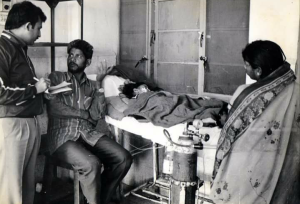
When Lalit was conducting investigation and ground level survey for his book on Bhopal gas disaster, two leading members of a Swiss charity organisation (Sentinelles) – it’s founder Edmond Kaiser (also the founder of Terre des hommes ) and Maurice Cruchon, met him in Bhopal in the first fortnight of October 1985.
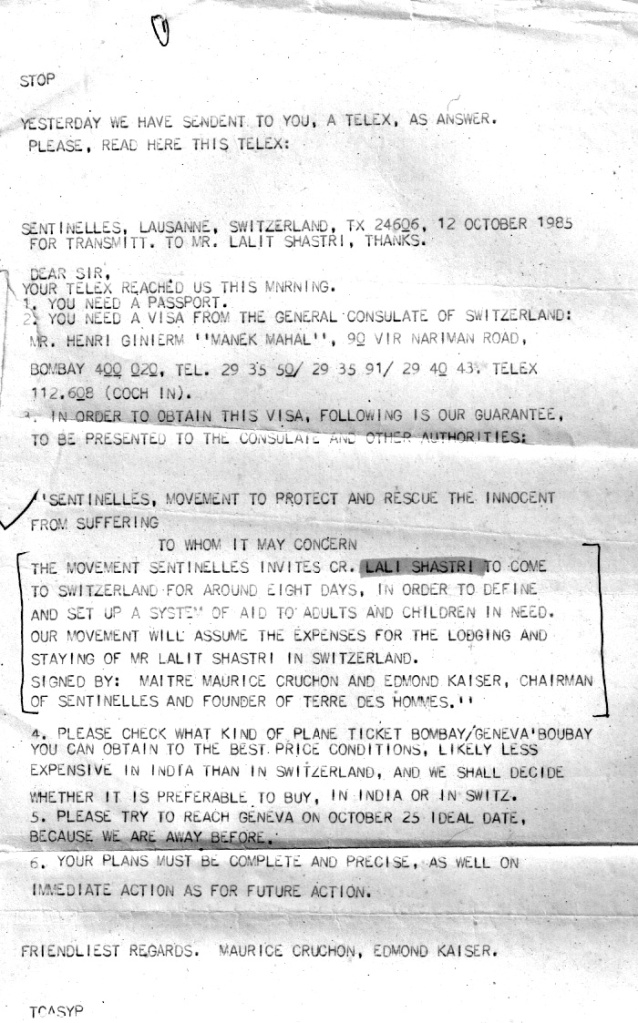
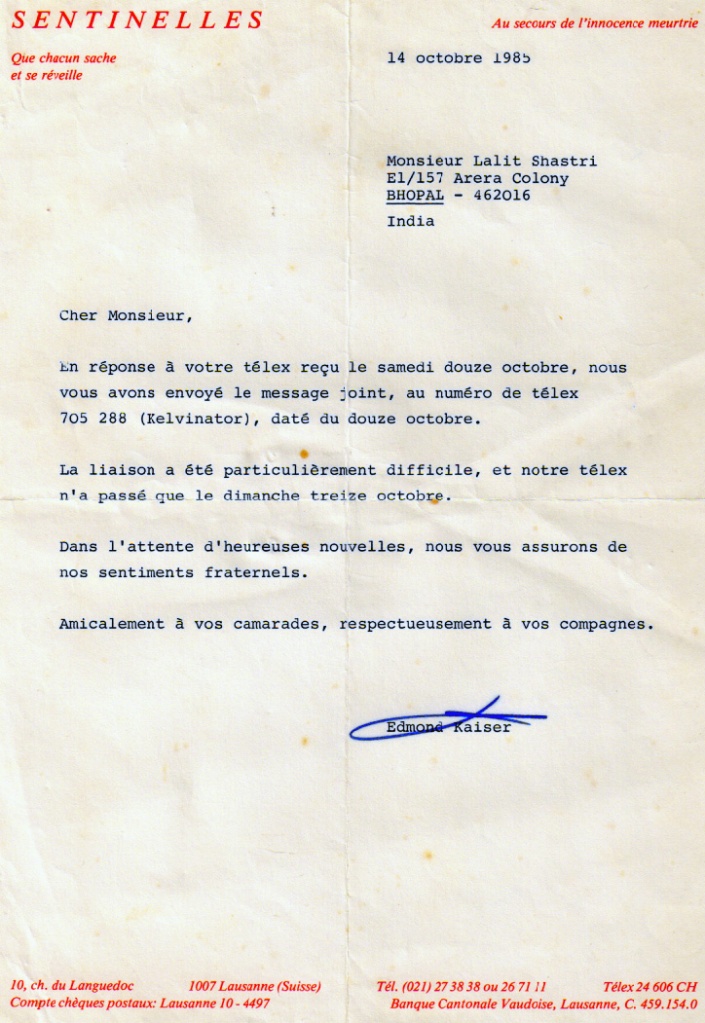
During a meeting at the Sentinelles headquarters at Lousanne, a few days later, Lalit was offered $2 million to organise a relief initiative for the Bhopal gas victims on immediate basis. On being asked about the source of these funds, Edmond Kaiser had said: “we have donors worldwide who do not want publicity”. He had even tried to convince Lalit to drop the whole idea of writing a book on the gas disaster.
Lalit did not pay heed to Edmond’s request to drop the book project and he left for the US to investigate various aspects linked with the gas tragedy after giving him (Edmond) the assurance that he would be discussing the nitty-gritty of the relief initiative for the gas victims only after finishing his work in America.
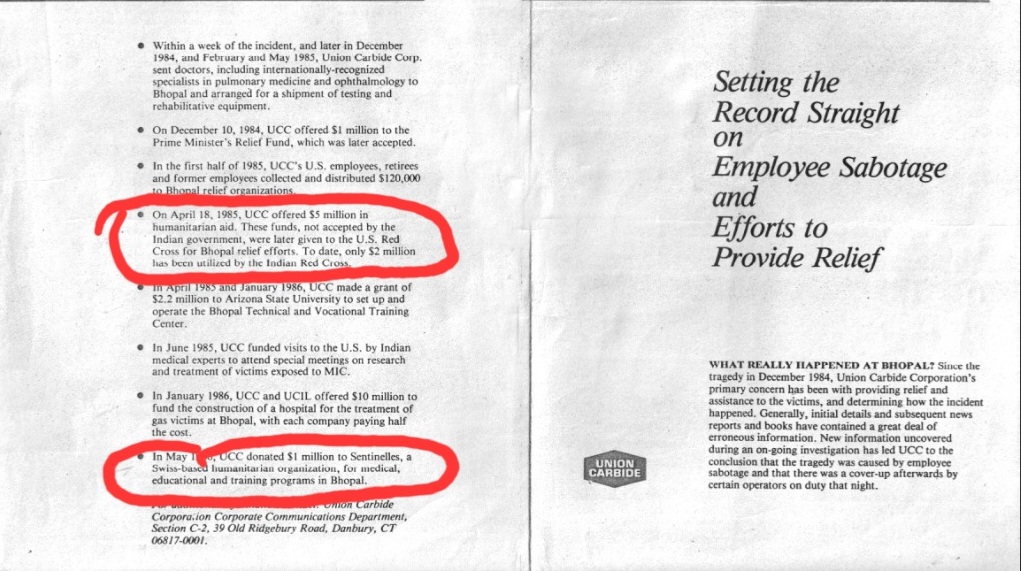
While in the US, Lalit gathered from a brochure passed on by Gerald j Williams, Attorney at Law with Slap, Williams and Cuker, when he met him in his chamber – Suite 960 – One Franklin Plaza, Philadelphia, PA 19102 at the fag end of 1985, that a large part of the money that was being offered to him for setting up the relief initiative for Bhopal victims was being channelised through Sentinelles by the US multinational Union Carbide Corporation. This was quite an eye-opener and before returning to India, Lalit made a brief stop over in Geneva, where he met Maurice Cruchon, the attorney connected with Sentinelles, and returned the air passage (Delhi-Geneva-Delhi) paid to him earlier by Sentinelles at Lousanne. Lalit took this step as he did not want to touch a single dollar linked to Union Carbide, especially since he wanted the US multinational to be tried for mass homicide.
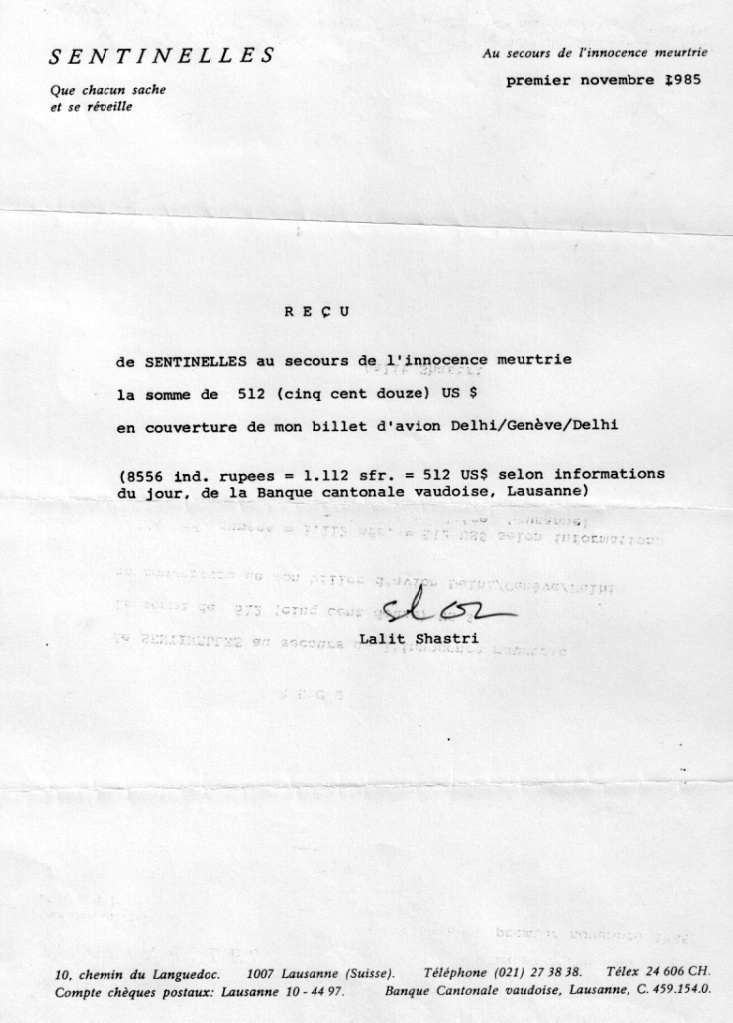
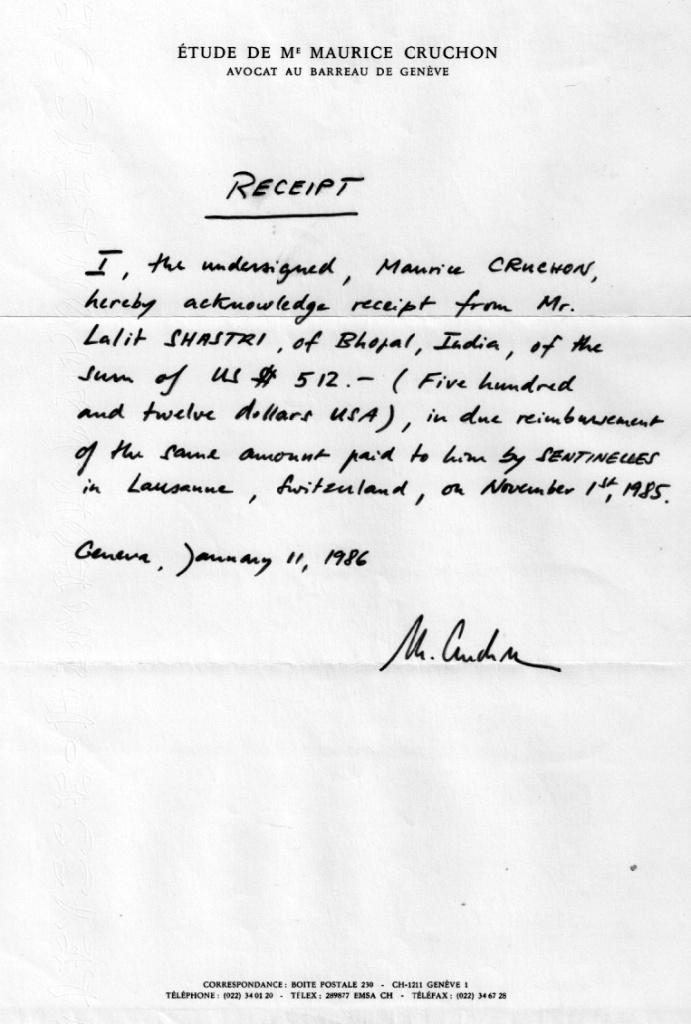
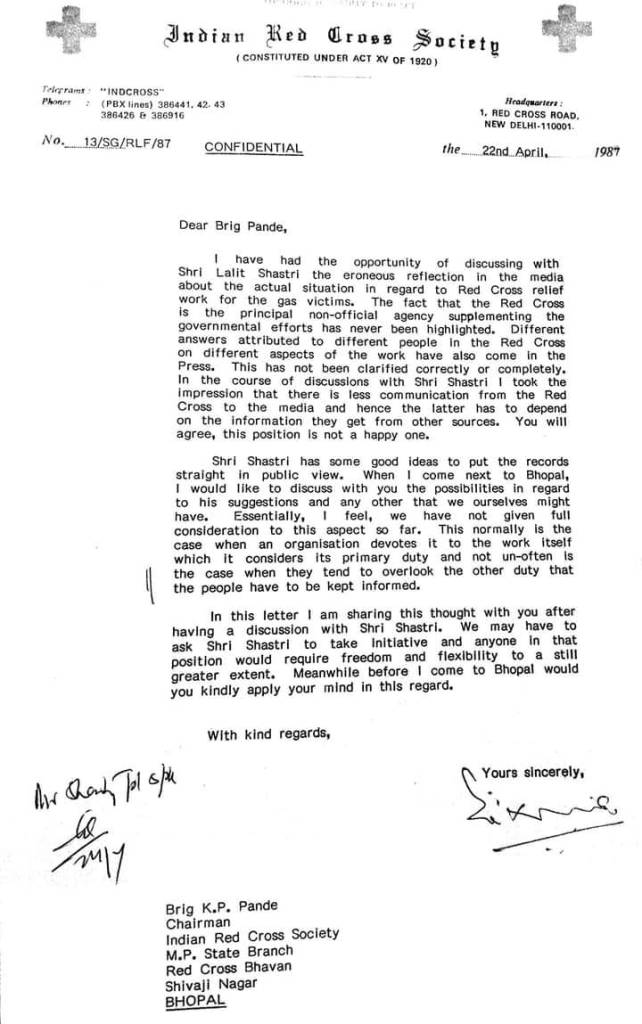
During 1987-1988, while serving the Indian Red Cross Society as Public Relations Officer for the Medical Relief Gas Victims Project, especially launched for more than 100,000 victims of the Union Carbide gas disaster, Lalit had played a leading role in maintaining transparency and a robust dialogue with the media, including international television News channels. This job, which he had taken up at the request of Ajit Bhowmick, the then Secretary General of the Indian Red Cross, also involved one-on-one interaction with top American Red Cross and International Committee of the Red Cross (ICRC) functionaries as well as Government of India and State government officials. In this capacity, Lalit helped in building a positive image of the Medical Relief project and this paved the way for continuous flow of funds including the second installment of US $ 5 million from American Red Cross for the special hospitals built for extending medical relief to the gas victims. This became possible especially after a CBS 60 minute episode, the most-watched television news magazine in the US at that time, gave full marks to the Indian Red Cross initiative, especially the Red Cross hospital facilities that were inaugurated by then President of India R. Venkataraman. This television programme was based on an on-the-spot coverage by a CBS team that included the legendary award-winning American journalist, Ed Bradley, famous for his work on the CBS News television program 60 Minutes. Lalit got plenty of credit for the positive coverage by CBS as he had made it a point to personally engage himself in a prolonged discussion with the CBS team leader about the disaster, it’s aftermath and the Medical Relief initiative before the CBS crew had returned from Bhopal.
When the CBS team had finished interviewing the Red Cross bosses, including the State Governor and Chairman Madhya Pradesh unit of the Indian Red Cross, the doctors at various medical facilities and also the gas victims, Lalit went to the CBS crew leader and introducing himself as the Public Relations Officer with Indian Red Cross Medical Relief Gas Victims’ Project sought an appointment with him later that evening. His response was a “big No” and Lalit was told point-blank that they have already interviewed “those who matter and they don’t talk to PROs”. Lalit was undeterred and chose to convey to the CBS guy that he was no less important for a television crew that was on ground zero to uncover the truth. Straightaway, Lalit told him that he had authored a book on the gas disaster that had been released in 1986 by the then President of India Giani Zail Singh at Rashtrapati Bhawan. This was the turning point and the meeting between the CBS crew leader and Lalit did take place that night. It began at Jehan Numa Palace Hotel shortly after 9 pm and went on till the wee hours of the next morning. What followed, with regard to the Red Cross Medical Relief Gas Victims’ Project, is now history. Of course, the Indian Red Cross received the remaining installments of the $5 million from the American Red Cross – thanks to the CBS 60 minute show. While this show underscored the “good work” done by the Indian Red Cross, the CBS ended up criticising the work that had been done by the Madhya Pradesh Government. A message in this regard, from the Indian Embassy in Washington DC that had monitored the CBS programme, immediately reached the PMO, which in turn got in touch with the Indian Red Cross headquarters in New Delhi. The Secretary General Indian Red Cross Ajit Bhowmick had responded to this, by telling the PMO: “Our man on the spot was working with full commitment, what was the entire State Public Relations Department doing when the CBS team was in Bhopal”. This was told to Lalit over telephone by Mr Bhowmick himself.
Director of American Red Cross Jose Aponte, who visited Bhopal soon after the CBS team had left the state capital, had shared his concern and apprehension regarding the 60 Minute show that was to be telecast by CBS during a luncheon meeting attended by Lalit along with top Indian Red Cross functianaries. He said that he was worried – what if the CBS were to project a negative image of the Medical Relief work by the Indian Red Cross? In that case, he had gone on to observe: “they would be compelled to stop the transfer of next installment of the $5 million funds”. Lalit had responded to this by telling Aponte rather assertively that he was optimistic and there was no question of Indian Red Cross initiative coming under attack. Aponte still appeared crestfallen as he said: “If wishes were horses…”. He had also underscored, “CBS is known more for digging holes rather than offering praise”.That afternoon, Aponte left for the USA via Hong Kong and to his delight, Lalit’s optimism had proved right. He even sent a telex message from Hong Kong congratulating Lalit for the positive projection by CBS vis-a-vis the Indian Red Cross in its most popular news programme – 60 Minutes.
